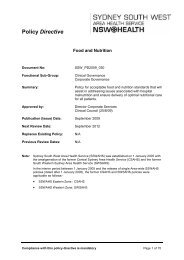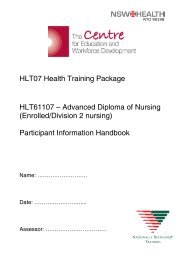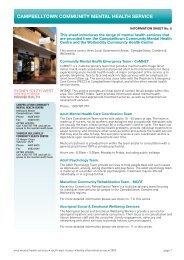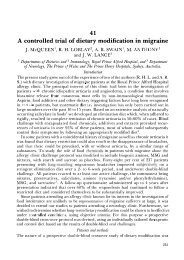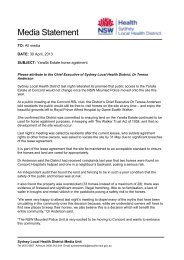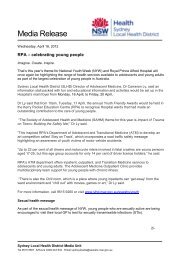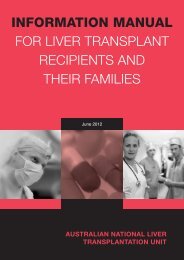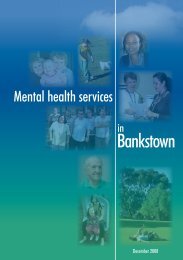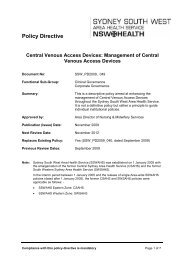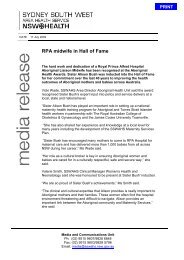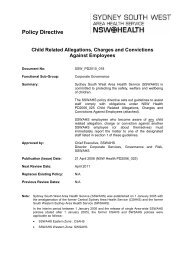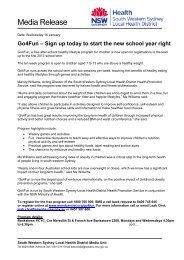Pressure Ulcer Prevention and Management - Sydney South West ...
Pressure Ulcer Prevention and Management - Sydney South West ...
Pressure Ulcer Prevention and Management - Sydney South West ...
You also want an ePaper? Increase the reach of your titles
YUMPU automatically turns print PDFs into web optimized ePapers that Google loves.
<strong>Sydney</strong> <strong>South</strong> <strong>West</strong> Area Health ServicePolicy No: SSW_PD2008_008Date Issued: January 2008• Assess patients carefully for compromised peripheral circulation<strong>and</strong> diabetes.• Use vigilance to assess patients with casts, traction <strong>and</strong> supportstockings.• Document pre-existing ulcers in the patient / client health carerecord in terms of location, severity, size, description of ulcer<strong>and</strong> surrounding skin.(ii)Prevent Exposure to Excessive Moisture or Dryness:• Implement continence training with toileting / bowelmanagement regimes where applicable.• Minimise skin exposure to urine or faeces, excessive sweatingor wound drainage as these can increase the pH of the skincausing chemical damage, maceration <strong>and</strong> denuding of the skin.• Consider medical assessment (eg. medication review) for highrisk patients to manage reversible cases of incontinence.(iii) Promote Optimal Skin Hygiene:• Cleanse the skin gently to improve overall hygiene <strong>and</strong> stimulatecirculation.• Treat dry skin with appropriate moisturising creams.• Avoid vigorous rubbing or massaging over bony prominences.(iv) Promote Optimal Nutrition:• Encourage a balanced diet to provide adequate protein <strong>and</strong>caloric requirements.• Assess nutrition <strong>and</strong> hydration <strong>and</strong> other indicies of nutritionalstate, eg. body weight loss, muscle wasting or any signs ofvitamin or mineral deficiencies.• Consult a dietician when nutritional deficits compromise tissueintegrity.(v)Minimisation of <strong>Pressure</strong> Shear <strong>and</strong> Friction. Damage to the skin iscaused by pressure, shearing forces or friction, or a combination ofthese:• Patients / clients who are immobile, inactive <strong>and</strong> elderly are atgreatest risk.• Skin assessment is critical in providing an indication of the skin’stolerance to pressure shear <strong>and</strong> friction.• Correct positioning, transferring <strong>and</strong> h<strong>and</strong>ling techniques shouldbe employed(vi) Protect Against the Forces of Shear <strong>and</strong> Friction:• Use aids that eliminate dragging <strong>and</strong> friction eg. Hoists, slidesheets, slide boards <strong>and</strong> slings.• Take care when transferring patients / clients between bed <strong>and</strong>chair• Avoid the overuse of plastic sheets / kyliesCompliance with this policy directive is m<strong>and</strong>atory Page 7 of 20




